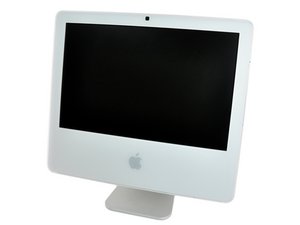Max hard drive limit on an Early 2006 iMac
Greetings all,
I'm going to rebuild a relative's Early 2006 iMac, currently with a Core Duo processor.
First thing - upping the storage capability. I come from the Windows world (no offense) and older machines have a BIOS limit (like 8.4 GB for real old machines, 137 GB, etc), where the BIOS could only see a certain amount of drive space, but the OS would create 2 partitions.
I am aware that Mac doesn't have BIOS, but I've heard everything under the sun about the capacity that can be used, like 2 TB, 750 GB, then 2.2 TB, then really anything.
I was shooting for 3 TB - is that doable with this machine, or am I going to hit a HDD limit?
Also, side question somewhat related - the replacement processor (T7600) - is Socket M, correct?
Thanks!
Questa è una buona domanda?

 2
2  1
1 
 974
974 
5 Commenti
Sorry for the delay - but I finally installed the hybrid. Good to go!
da VictorVictor5
Hows the speed looking? Also did you boost the RAM to the max? It should be much faster now.
da DanJ
Dan,
Sorry for the delay - had a bit of a CPU fan issue (fixed) and my semester is wrapping up! Speed is dramatically improved! Videos are no longer choppy and everything is working fantastic. Thanks for the advice on the Hybrid!
da VictorVictor5
Your welcome! Some last things I would do here is don't over fill the drive, leave at least 1/4 free (1/3 is better) so your system has some work space. Next get a defrag tool (i.e. Drive Genius) and run it once a year to compact the files. Enjoy!
da DanJ
Wow thanks Dan! Knew about leaving some space but did not know about Drive Genius!
da VictorVictor5